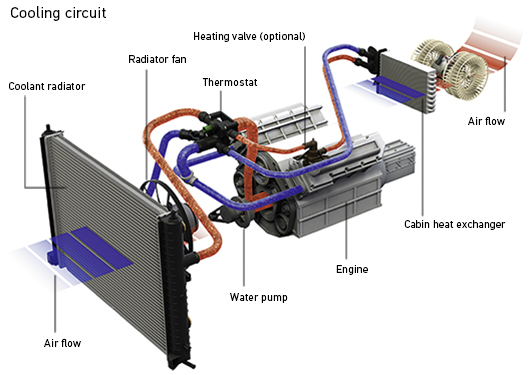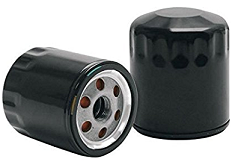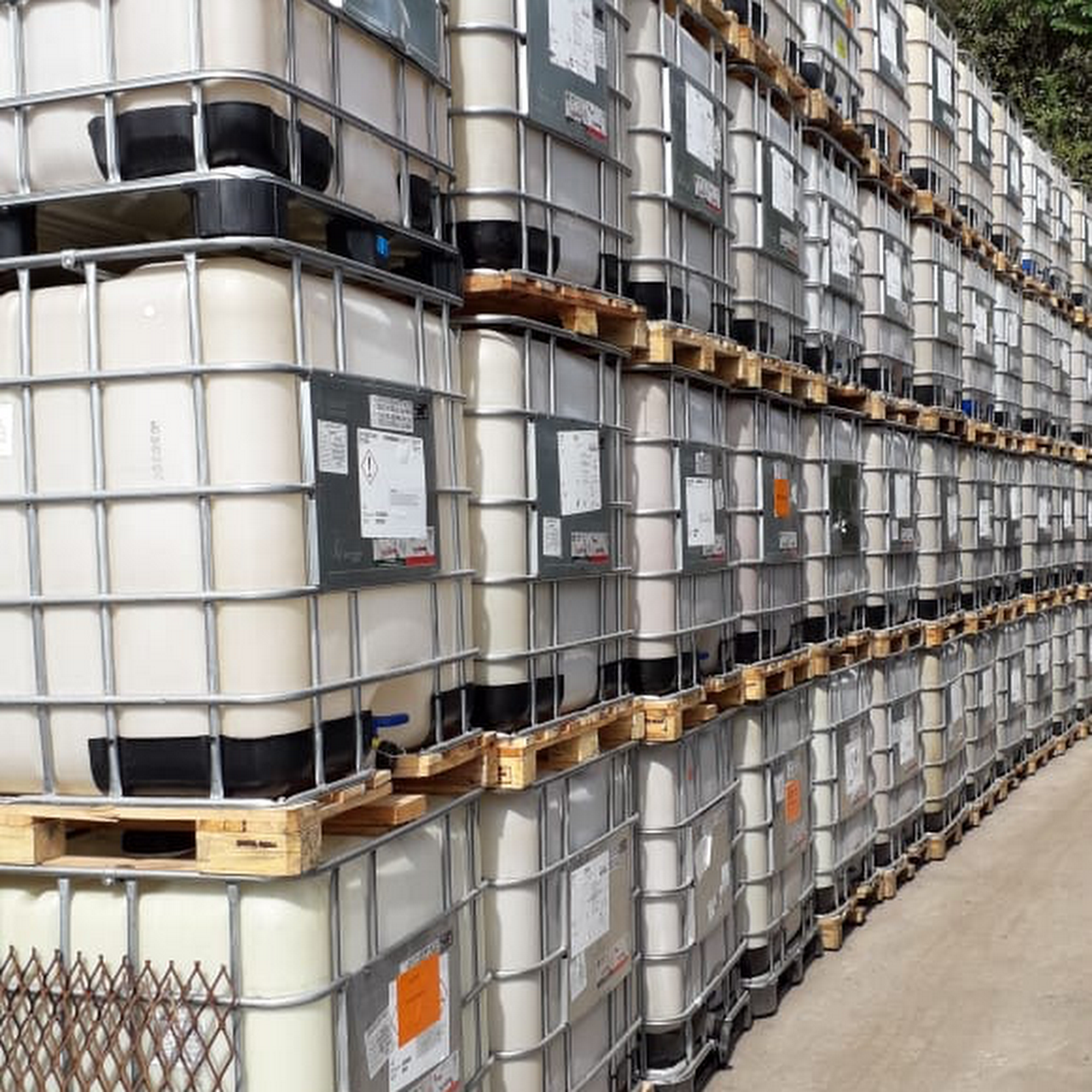It’s important maintenance teams recognize the coolant’s total cost of ownership. OAT ELC coolants may have a higher initial price compared to older IAT coolants, but they will prevent increased maintenance costs during their service life.
...choosing to upgrade, or buying new machines and not being sure what coolant, it’s currently running?
The main advantage of an Organic Acid Technology (OAT) ELC is to simplify the work of the maintenance team.
The OAT coolant provides a longer service interval compared to conventional Inorganic Acid Technology (IAT) based coolants. These older coolants also required a lot monitoring to ensure that the corrosion inhibitors are maintained at ideal levels, via frequent testing and addition of supplemental coolant additives (SCA) during the usage cycle.

Typical Engne Cooling circuit
What coolant options do you have?
There are three (3) major categories of engine coolants

Conventional IAT coolants include corrosion inhibition with traditional formulations. These may include nitrite, nitrate, silicate, borate, phosphate, molybdate, and azoles.
Hybrid coolants use an organic acid as the primary corrosion inhibitor and also heavily rely on various inorganic supplements such as silicate, nitrate, phosphate, and molybdate. Heavy-duty versions may also be supplemented with nitrite.
OAT coolants rely mainly on carboxylic acids and azoles. They generally do not contain silicate or borate. Heavy-duty versions may also contain nitrite or molybdate, or both, but they still categorize as OAT.

Nope! On the surface, it looks like a hybrid between IAT and OAT would be compatible with either, but that’s not the case. Doing so potentially limits your coolant’s efficacy and can greatly reduce the lifecycle.
Mixing coolants might gunk up your cooling system, and this is true even if you have drained the coolant from the machine. It is not enough to just add a different coolant because traces of the old type remain and cling to passageways.
When changing from IAT to OAT, you need to know of the conversion practices and ensure that you examine and tighten the cooling system of the machine as you go through the process. When it comes to the drain, flush and fill process, take note that IAT coolants have the ability to mask leaks in the cooling system due to silicates that build up over time. “An OAT coolant will scrub these blockages away and expose existing leaks in the system”
Furthermore, make sure you understand your choice of OAT coolant. For example, some types of additives like 2-ethylhexanoic acid may have compatibility concerns with certain silicon-based elastomers found in some cooling systems.
...though it may seem apparent, avoid adding nitrite-based coolant to nitrite-free coolant during subsequent fluid top-ups. That would defeat the purpose of the additives.
How do you support your clients at your service bay or fuel station?
Managing multiple OEMs with different manufacture years can be a headache for service managers. Most service stations would rather top up with water or sell you “dyed water” which contain little to no additives. These can gunk up your cooling system, limit your coolant’s efficacy or produce mixed colours that are awful.
Service bay managers need to consult the right experts to fully understand top up ratios. These experts will also guide you in selecting the right coolant for operations.
The coolant industry understands the challenges faced by service stations and has developed specialized top-up blends that solve these compatibility issues and leave your clients’ coolant colours intact.
Select your Coolant Filters with caution!
Coolant filters may be pre-charged, standard charged or blank. The maintenance team needs to take extra precaution in ensuring that the chemical additives in the coolant filters are compatible with the coolant.

When unsure, use blank filters, which contain no chemical additives. These can be used with cooling systems maintained by liquid additives and systems using long-life coolants which require no additives.
Categories: Blog
Tags: #IATcoolant, #OATcoolant, #coolant, #mining, #filtration
Source: Internal
Author: JOSEPH OSEI MENSAH
Date: MAY 07, 2021

